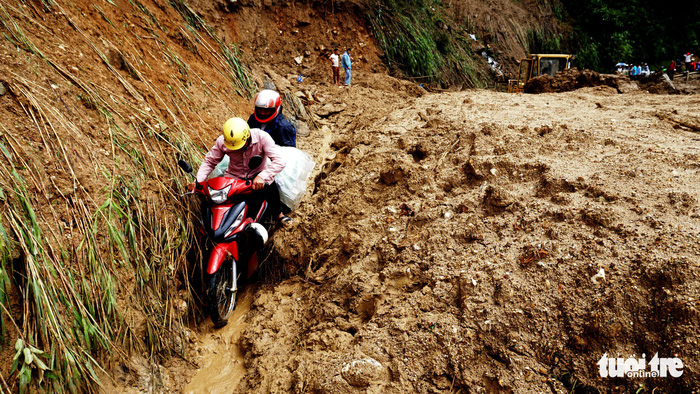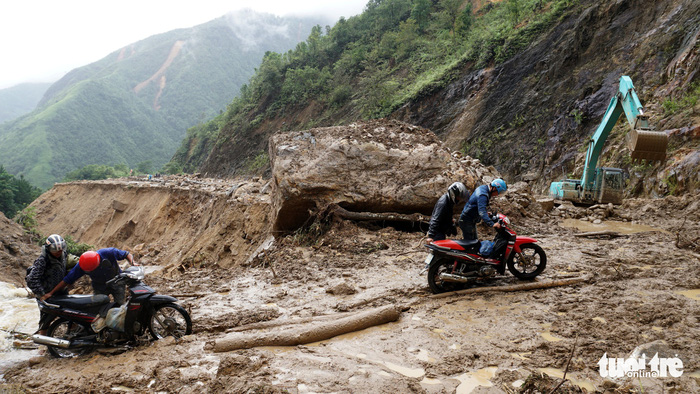Twenty-one people have been confirmed dead by floods in the mountainous northern provinces of Lai Chau and Ha Giang as of Wednesday afternoon, while financial damage caused by the disasters has been estimated at a whopping VND450 billion (US$19.8 million).
Among the deceased victims, 16 were in Lai Chau Province and the other five lived in Ha Giang.
About nine victims have remained unaccounted for in Lai Chau since torrential rain hit the region on Saturday night, bringing about flash floods and landslides.
As of Tuesday night, about 124 houses have collapsed and been swept away by floods, while 597 others were seriously damaged, requiring prompt evacuation.
Nearly 1,500 homes are still submerged under water.
Some 717 hectares of paddy filed and 486 hectares of crops were inundated, and approximately 46 hectares of aquaculture farms were also damaged.
 |
| A road in Lai Chau Province is buried under mud and rocks. Photo: Tuoi Tre |
More than 195 cattle and 5,900 poultry were killed.
Financial damage in the two provinces has been estimated at a total of VND450 billion ($19.8 million), according to Lai Chau and Ha Giang’s steering committees for disaster prevention.
Multiple national and provincial highway sections are still blocked by mudslides.
Deputy Prime Minister Trinh Dinh Dung paid a visit to Tam Duong District, Lai Chau Province on Tuesday morning to directly evaluate the situation.
Dung called on local authorities to continue their efforts to deal with the consequences and prioritize the search for missing victims.
 |
| Search and rescue units look for missing victims. Photo: Tuoi Tre |
Residents in dangerous areas must be evacuated in a prompt manner, he added.
The National Center for Hydro-meteorological Forecasting has predicted that downpours will linger until the end of Wednesday, before a heat wave starts affecting northern and central Vietnam on Thursday, causing temperature to surge.
Professor Nguyen Ngoc Lung, head of the Research Institute for Sustainable Forest Management and Forest Certification (SFMI), attributed the severity of floods in Lai Chau and Ha Giang to the loss of natural forests.
Many provinces in mountainous areas of northern Vietnam previously cleared natural forest to make way for rubber tree plantation, which worsened the situation, Lung elaborated.
Like us on Facebook or follow us on Twitter to get the latest news about Vietnam!






















































